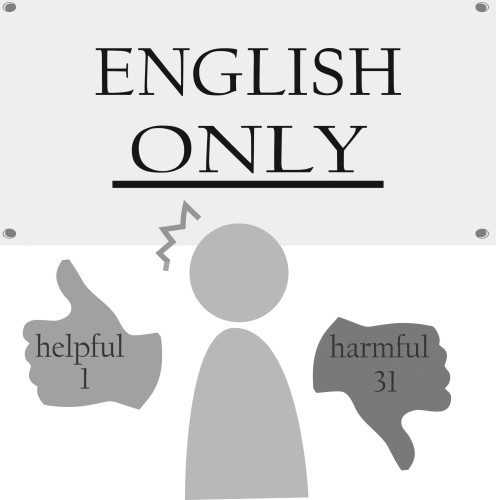STAFF EDITORIAL: Is Restricting Language Among Cafeteria Workers Helpful or Harmful to a School Community?
Discrimination has been an underlying, systemic problem since the beginning of time. Whether it involves race, gender or even age, there seems to always be a prejudice towards something in society. Language is a societal aspect that is no exception. Restricting language in public workplaces, for example, comes off as harsh and unwelcoming to the workers involved.
In October, when students and kitchen workers at Harvard Elementary School saw fliers notifying them of the school’s new “English-only” policy, they responded with shock and dismay. Though the school stated that the policy is mainly for safety reasons when handling food in the kitchen, United Teachers Los Angeles (UTLA) protested against the Los Angeles Unified School District (LAUSD). How would it be safer for workers to communicate only in English when the majority of the staff is fluent in Spanish? As a community composed of mostly Hispanics, it does not make sense to alter existing ways to communicate. After all, bilingual and multilingual skills should be celebrated, not denied.
To the LAUSD, enforcing an English-only policy ensures efficiency. Cafeteria workers will be able to communicate to students without any problems, helping to relay instructions easier and faster. However, the instructions that workers say while serving food are generally simple and short. They already direct and caution students on a daily basis; this essentially questions why the policy was added in the first place. There is no purpose in requiring English only when cafeteria instructions are already sufficient and effectively communicated.
Restricting language in a school cafeteria workplace ultimately sends an unwanted message. Though English fluency is an understandable requirement for workers, declaring that it is the only language they are allowed to use comes off as an unnecessary partiality. The word “only” creates an unwelcome atmosphere and implies that other languages are not held to the same standard. The goals of expanding parent engagement and building stronger ties with immigrant communities are objectives that most school districts have. However, English-only policies are not solutions to accomplish these goals.
If the district was working to primarily enforce safety, the opposite of an English-only policy would be needed. All languages should be used so that speakers of various tongues are able to comprehend cafeteria instructions. Considering that no recent incidents compromising student safety have been brought up, there is not much justification for this policy. It guarantees that students will hear “Hot plate!” or “Watch out!” in English, but it is at the cost of the reputation and relationship schools will have with parents, students and their cafeteria staff.
